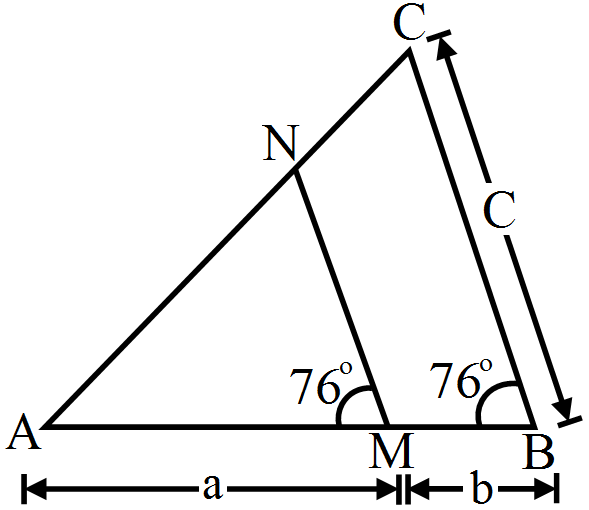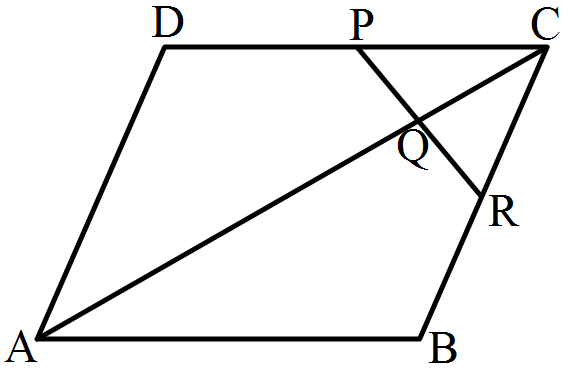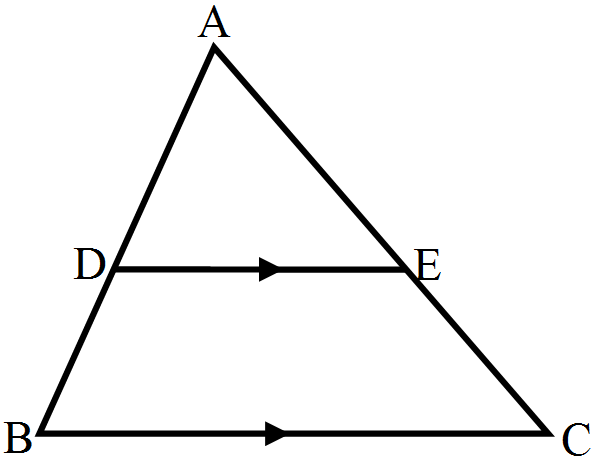In the given figure, O is a point inside a $\triangle\text{PQR}$ such that $\angle\text{PQR}=90^\circ,\text{OP}=6\text{cm}$ and $\text{OR}=8\text{cm}.$ If $\text{PQ}=24\text{cm}$ and $\text{QR}=26\text{cm},$ prove that $\triangle\text{PQR}$ is right-angled.

In $\triangle\text{PQR},\angle\text{QPR}=90^\circ,\text{PQ}=24\text{cm},$ and $\text{QR}=26\text{cm}^2$ In $\triangle\text{POR},\text{PO}=6\text{cm},\text{QR}=8\text{cm},$ and $\angle\text{POR}=90^\circ$
In $\triangle\text{POR},$ $\text{PR}^2=\text{PO}^2+\text{OR}^2$ $\text{PR}^2=(6^2+8^2)\text{cm}^2$ $=(36+64)\text{cm}^2=100\text{cm}^2$ $\text{PR}=\sqrt{100}\text{cm}=10\text{cm}$ In $\triangle\text{PQR},$ By Pythagoras theoram, we have $\text{QR}^2=\text{QP}^2+\text{PR}^2$ $(26)^2\text{cm}^2=\Big(24^2+10^2\Big)\text{cm}^2$ $676\text{cm}^2=(576+100)\text{cm}^2$ $676\text{cm}^2=676\text{cm}^2$ Hence, $\text{QR}^2=\text{QP}^2+\text{PR}^2$(sum of square of two sides equal to square of greatest side) Hence, $\triangle\text{PQR}$ is a right triangle which ois right angled at P.

In $\triangle\text{POR},$ $\text{PR}^2=\text{PO}^2+\text{OR}^2$ $\text{PR}^2=(6^2+8^2)\text{cm}^2$ $=(36+64)\text{cm}^2=100\text{cm}^2$ $\text{PR}=\sqrt{100}\text{cm}=10\text{cm}$ In $\triangle\text{PQR},$ By Pythagoras theoram, we have $\text{QR}^2=\text{QP}^2+\text{PR}^2$ $(26)^2\text{cm}^2=\Big(24^2+10^2\Big)\text{cm}^2$ $676\text{cm}^2=(576+100)\text{cm}^2$ $676\text{cm}^2=676\text{cm}^2$ Hence, $\text{QR}^2=\text{QP}^2+\text{PR}^2$(sum of square of two sides equal to square of greatest side) Hence, $\triangle\text{PQR}$ is a right triangle which ois right angled at P.
Download our appand get started for free
Experience the future of education. Simply download our apps or reach out to us for more information. Let's shape the future of learning together!No signup needed.*
Similar Questions
- 1In the given figure, $\angle\text{AMN}=\angle\text{MBC}=76^\circ.$ If p, q and r are the lengths of AM, MB and BC respectively then express the length of MN in terms of p, q and r.View Solution

- 2Two triangles DEF and GHK are such that $\angle\text{D}=48^\circ$ and $\angle\text{H}=57^\circ.$ If $\triangle\text{DEF}\sim\triangle\text{GHK}$ then find the measure of $\angle\text{F}.$View Solution
- 3View SolutionThe corresponding altitudes of two similar triangles are 6cm and 9cm respectively, Find the ratio of their areas.
- 4$\triangle\text{ABC}\sim\triangle\text{PQR}$ and $\text{ar}(\triangle\text{ABC})=4\text{ar}(\triangle\text{PQR}).$ If BC 12cm, find QR.View Solution
- 5Find the length of altitude AD of an isosceles $\triangle\text{ABC}$ in which AB = AC = 2a units and BC = a units.View Solution
- 6ABCD is a parallelogram in which P is the midpoint of DC and Q is a point on AC such that $\text{CQ}=\frac{1}{4}\text{AC}.$ If PQ produced meets BC at R, prove that R is the midpoint of BC.View Solution

- 7View SolutionA 13-m-long ladder reaches a window of a building 12m above the ground. Determine the distance of the foot of the ladder from the building.
- 8In a trapezium ABCD, it is given that AB || CD and AB = 2CD. Its diagonals AC and BD intersect at the point O such that $\text{ar}(\triangle\text{AOB})=84\text{cm}^2.$ Find $\text{ar}(\triangle\text{COD}).$View Solution
- 9D and E are points on the sides AB and AC respectively of a $\triangle\text{ABC}$ such that DE || BC: If $\frac{\text{AD}}{\text{AB}}=\frac{8}{15}$ and EC = 3.5cm, find AE.View Solution

- 10In the given figure, $DE || BC$. If $DE = 3\ cm$, $BC = 6\ cm$ and $\text{ar}(\triangle\text{ADE})=15\text{cm}^2,$ find the area of $\triangle\text{ABC}.$View Solution

